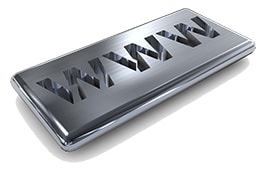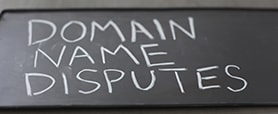UAE Domain Name Governance and Dispute Resolution
What is in the name, asked a layman.
Everything, if it is a domain name, replied the lawyer!
Introduction
 Almost every kind of business, whether a startup or a fully-grown company need an online presence through an official website. A website is utilized as a handy marketing tool with very little investment, and it can be beneficial for the consumer to know what kind of business services are provided by that company. A website doesn’t have visit timing which means that customers can assess it during any hour of the day within the year. The existence of an active and fully functional website also increases the credibility and sales of the business as both are interrelated. The higher the reliability, the more will be sales. In today’s hyper internet-connected world, whenever a prospective customer hears about a business, they immediately Google (or Yahoo?) it. If they do not find the official website connected with that business then not only they will have limited information about the product or service, but they also might end up thinking that the company is not credible enough.
Almost every kind of business, whether a startup or a fully-grown company need an online presence through an official website. A website is utilized as a handy marketing tool with very little investment, and it can be beneficial for the consumer to know what kind of business services are provided by that company. A website doesn’t have visit timing which means that customers can assess it during any hour of the day within the year. The existence of an active and fully functional website also increases the credibility and sales of the business as both are interrelated. The higher the reliability, the more will be sales. In today’s hyper internet-connected world, whenever a prospective customer hears about a business, they immediately Google (or Yahoo?) it. If they do not find the official website connected with that business then not only they will have limited information about the product or service, but they also might end up thinking that the company is not credible enough.
Therefore, it is imperative for almost all kind of businesses to have a website. If you own a business, irrespective of its size, nature and consumer geographic you can afford not to have a site!
But it doesn’t mean that all is well with websites. The websites provide credibility and goodwill to the business, and therefore it is essential to protect them from any misuse. In March 2018, the World Intellectual Property Organization (WIPO) (the United Nations agency responsible for promoting and protecting intellectual property around the world) released a report on domain name disputes. The report stated that there had been a significant increase in arguments about domain names filed in 2017. The description provided that more than three thousand cases registered explicitly by the trademark owners concerning misuse of websites.
What is a Domain Name?
Before we begin with legal issues related to the domain name and dispute resolution, it will be better we first try to understand what a website is, domain name and types of the domain name.
Domain names are a set of characters/letters, which are used to communicate on Domain Name System (DNS) servers. So what is DNS then? As explained in one of the articles published in Forbes;
“The Domain Name System (DNS) is one of the most critical parts of the internet’s infrastructure … DNS underpins all important services that run over the internet, including the World Wide Web, email, messaging and more. … the domain names are indexes into DNS’s database. You retrieve information from DNS’s database by mentioning a domain name and a kind of data in which you are interested. Web browsers typically lookup for the IP address or address corresponding to the domain name in a URL.”[1]
 There are two types of domain names, the generic top-level domain name (the gTLD) and country code top-level domain names (ccTLDs). In the https://stalawfirm.com the red part is the Top-Level Domain, and the green part is the website name, and it is known as a midlevel domain name. In http://www.dubaided.ae the red part is Country Code Top Level Domain (the ccTLD). The other examples of gTLD are .net, .org, .biz, .info etc. And few examples of ccTLDs are .ae (for United Arab Emirates), .in (for India), .eu (for European Union) and .pk (for Pakistan).
There are two types of domain names, the generic top-level domain name (the gTLD) and country code top-level domain names (ccTLDs). In the https://stalawfirm.com the red part is the Top-Level Domain, and the green part is the website name, and it is known as a midlevel domain name. In http://www.dubaided.ae the red part is Country Code Top Level Domain (the ccTLD). The other examples of gTLD are .net, .org, .biz, .info etc. And few examples of ccTLDs are .ae (for United Arab Emirates), .in (for India), .eu (for European Union) and .pk (for Pakistan).
The gTLDs are generally available for everyone to register, in any part of the world but some countries put some restrictions on the registrants for registering ccTLDs. Like European Union requires the registrant of the .eu ccTLDs to be resident or located in one of the countries of the European Union group.
The UAE Domain Name Dispute Resolution Policy
The Telecom Regulatory Authority (the TRA) of UAE issued the UAE Domain Name Dispute Resolution Policy (the Policy) on 22nd September 2010 which became effective from the same day. The Policy covers disputes arising out of registration and renewals related to UAE ccTLD. As per the Section 5 of the Policy, the Registrar can cancel, transfer or make changes in the Domain Name Registration on receipt of n order from a competent court or arbitral tribunal or on the arrival of a request from the Administrative Panel requiring the same.
Section 6 of the Policy provides the list of disputes, which needs submission for a mandatory administrative proceeding and the same, shall take place before the WIPO Arbitration and Mediation Centre. The record of compulsory administration proceedings includes the following cases;
- Domain name is similar to a trademark or a service mark;
- No right or legitimate interest in the concerned Domain Name;
- If the Domain name is registered or used in the bad faith
The Section 6 (b) of the Policy provides the evidence required for proving the registration or use in bad faith. The Section 6 (c) of the Policy provides the ways to show or demonstrate an individual’s right to a legitimate interest in the Domain Name in responding to a Complaint. The Policy provides further details regarding consolidation of disputes, fee, remedies, availability of court proceedings, etc.
World Intellectual Property Organization’s (WIPO) Uniform Domain Name Dispute Resolution Policy (UDRP Policy)
The Arbitration and Mediation Centre of the WIPO has a specific domain name dispute resolution policy for generic top-level domains (gTLD) and country code top-level domains (ccTLD). This UDRP Policy of WIPO as also been adopted by the Internet Corporation for Assigned Names and Number (ICANN), the private non-profit corporation responsible for allocation of IP Address and domain name system management.
 Moreover, the WIPO Arbitration and Mediation Centre are responsible for resolution of domain name disputes under the Section 6 of the UAE Domain Name Dispute Resolution Policy 2010.
Moreover, the WIPO Arbitration and Mediation Centre are responsible for resolution of domain name disputes under the Section 6 of the UAE Domain Name Dispute Resolution Policy 2010.
Although the WIPO UDRP Policy and the UAE Domain Name Dispute Resolution Policy are almost identical, however, there is one specific difference in the both. In UAE Policy it is sufficient for the complainant to prove that either registration or subsequent use of the domain name with mala fide intention, whereas the UDRP requires the complainant to establish both elements.
In Bayer AG v Lin Shen (Case No. DAE2012-0004), the WIPO’s Administrative Panel decided a dispute related to the domain name <bayer.ae> (the “Domain Name”) which has a unique registration with AE Domain Administration (.aeDA). In this case, the Respondent got the registration of the domain name bayer.ae which evolved to a portal site (“Respondent’s Website”) that provided a number of links to third-party sites that purported to offer, amongst other things “Bayer Aspirin” and “Bayer HealthCare” as well as links to unrelated sites, including adult sites. The Complainant is a well-known German pharmaceutical company name Bayer, and it contended that;
- that the DN is identical to the Complainant’s BAYER Mark;
- That the Respondent has no legal interests in the Domain Name; and
- that the Domain Name is being registered with bad intentions.
The Administrative Panel agreed with the contentions and reasoning offered by the Complainant and ordered that the domain name should be given to the Complainant.
Conclusion
The domain names have become part of all sorts of business and therefore to have it or do not have it is any longer a question. The real problem is how to protect your website and domain name from any illegal use as your business’s reputation and goodwill now depend on it. It is advisable that companies that don’t have a website should create one before someone else take advantage of their goodwill and stay vigilant over the internet to spot and illegal use of their domain name or trademark through cybersquatting or other forms of cybercrimes. It is highly advisable to take help of experienced cyber and trademark layers to ensure proper registration and protection of your domain name.
[1] Forbes, What is the Domain Name System and Why Does it Matter? Available at: https://www.forbes.com/sites/forbestechcouncil/2017/09/07/what-is-the-domain-name-system-and-why-does-it-matter/#499427923796
 English
English
 عربي
عربي Русский
Русский 官话
官话 português
português
 Türk
Türk 
















